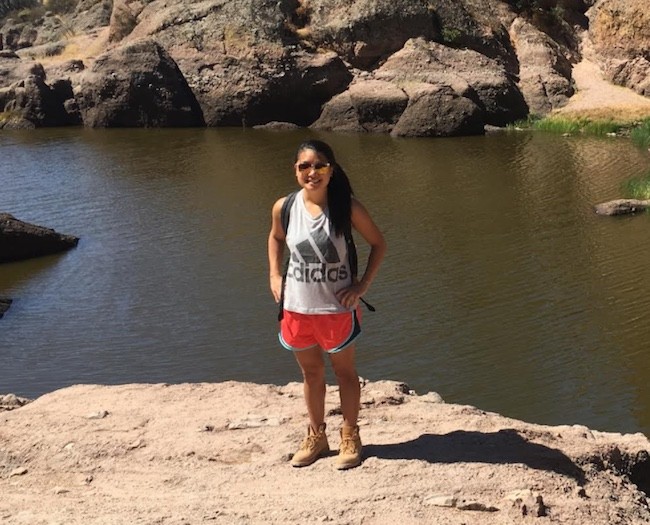Getting to Know Joyce Wang
LinkedIn wouldn't be the company it is today without the engineers who built it. We have no shortage of talented individuals in technical roles across the company. They are the ones who create, build, and maintain our platform, tools, and features—as well as write posts for this blog. In this series, we feature some of the people and personalities that make LinkedIn great.
Joyce is a Senior Software Engineer at LinkedIn on the Infrastructure Tools team. She’s been at LinkedIn since August 2015, and has been working on a sub-team called “Centralized Release Tool” (CRT), which is a tool that provides the functionality and rules to automate deployments and to track changes that go through the commit-to-deploy pipeline.
Before her journey began at LinkedIn, she studied computer science at Rutgers University in New Jersey. Throughout college, she worked as a Student Web Developer and a Part-Time Lecturer for a computer science course. She was also Software Engineer Intern at Google on the Search-Knowledge Graphs Team.
What are some of the coolest projects that you and your team have been working on?
Towards the end of 2015, my team began working on developing the new Centralized Release Tool (CRT). And now, within the past few months, we’ve been gradually ramping teams to use our new product. This has been super exciting because my team has gone through so much trouble debugging and figuring out how the old CRT was designed to work; we’ve definitely learned about bad coding and design practices. Overall, the new CRT is a lot more scalable, user friendly, and visually appealing.
Specifically, I’ve been working on improving data quality within Tools so that the new CRT won’t have missing data and misleading information for engineers. This initiative involved interacting with other teams on Tools such as the Multiproduct, TestManager, and EKG teams, since we needed to make sure that all the Kafka messages that were produced by those services were being consumed by CRT and that the right messages were being produced.
What kinds of engineering problems interest you the most?
In 2011, there was a two-month period called “InVersion” when LinkedIn stopped all forward development to implement its initial iteration of continuous delivery in order to make software releases more efficient. These two months were key to LinkedIn’s continued success, especially since developers used to spend more time dealing with site outages and merge conflicts during releases than they did on developing new features. After learning about InVersion and working on CRT for over a year, I’ve developed a passion for working on internal tools. I’m interested in improving developer productivity and happiness, and I enjoy thinking about how all our tools can be integrated to create an automated release pipeline.
Compared to other places you've worked, how do you like working at LinkedIn?
LinkedIn is my first full-time job, and it has already exceeded all my expectations. Compared to the other places that I’ve interned and worked at during college, LinkedIn definitely has the best culture, mentorship program, and team environment by far. When I first started working, I had a terrible case of Impostor Syndrome, especially as a new grad right out of college. My team was crucial in helping me overcome my insecurities by answering my many questions and providing constructive feedback. I also have two great mentors who have my best interests in mind and help guide me in the right direction. In addition, I have an amazing manager, who’s incredibly supportive when it comes to career development. LinkedIn also has the best food, so that makes me enjoy working here that much more!
What are your favorite things to do when you’re not at the office?
I love enjoying the outdoors, exercising, and traveling when I’m not at work. I like taking LinkedIn’s fitness classes during the week and going hiking on weekends. My favorite place to travel to is Taiwan, but since it’s harder to take international trips, I still try to travel within the United States. Within the past year, I’ve been able to go to Pittsburgh, Cincinnati, Portland, Austin, Seattle, and of course, back to Jersey. I also enjoy watching TV, playing board games, and going on food adventures!
You recently attended the 2016 Grace Hopper Celebration. What was that event like, and what were some key takeaways you took from it?
This year, the turnout of 15,000 attendees at Grace Hopper was unbelievable. I still remember going to the conference two years ago as a student, when everyone was excited about having over 7,000 people show up. The increase of women working in tech has been incredibly eye-opening.
I was also able to give a tech talk, called “I’d Like to Order Some Bytes for Continuous Delivery, Please.” This was a great opportunity for me to share the cool things that LinkedIn has been working on throughout the years. I was also able to talk about how we were able to reach stability when releasing and how this was done by getting all engineers to work on improving tools for a whole two months. It’s always super exciting being able to talk about how awesome our internal tools are at LinkedIn, especially since we build all of them in-house. Moreover, this was the first time that I’ve given a talk, and over 600 people showed up, which made it even more memorable for me. I was humbled by the turnout, and it made me realize how many companies aspire to be where LinkedIn currently is.
I’d encourage everyone to go to Grace Hopper at some point. Being able to meet people who have been in your shoes and are currently going through what you’re going through is very comforting. And similarly, being able to meet leaders in the industry that you work in is inspiring and motivating.


